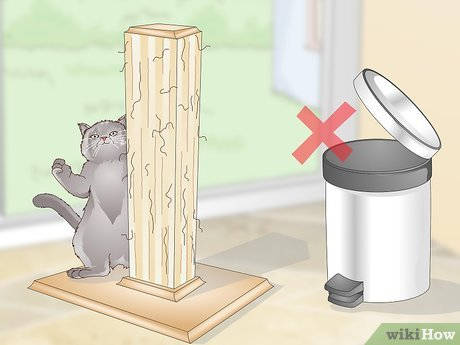
- Cat tearing up the couch, how do I get him out of this bad habit? ?
- Effective methods
- How to repel cats
- How to repel house cats
- How to protect the couch from the cat: simple and affordable ways
- These smells discourage cats and can save your wallpaper, flowers and furniture!
- Use the scratching post effectively
- Turn the couch into an unattractive object
- Once and for all we will teach our cat to sharpen its claws on the furniture
- The material is based on the book by Elena Klusovets “The same language with the cat.
Cat tearing up the couch, how do I get him out of this bad habit? ?
Before the appearance of a furry family member in the house, toys, litter box, bowls, a cat sleeping place are prepared. However, often, in spite of care and affection, after a couple of months, a cute kitty can turn into a real disaster and start scratching furniture, curtains, wallpaper, that is, all that can be sharpened claws.
First of all, it should be noted that cats scratch the furniture not because of their whim, but because of the inherited genes from their wild ancestors. There are glands on the pads of cat’s paws, so when the whiskered cat scratches the furniture in the house it marks its territory. Also in this case there is grinding of claws, which cause inconvenience to the animal when walking. In the wild, members of the feline family sharpen their claws in the wild, climbing trees or hunting small animals. Pets, on the other hand, are deprived of this opportunity, so the furniture suffers.
Effective methods
Due to the reasons listed above, it will not be possible to get rid of the problem at all, but there are several effective methods that will minimize the damage.
The first thing you can do is to let the cat realize its instinct. You can do this by buying a scratching post which will allow the cat to sharpen its claws and not to damage furniture, carpets or curtains. In some cases it will take time to get your pet used to the new object. To do this the scratching post should be placed near the pet’s bed. As soon as you see that the cat intends to sharpen its claws in a wrong place, bring it to the scratching post and move your paws through it imitating the scratching motion. To speed up the habituation process, you can buy several scratching posts and place them in places where the pet scratches most often. You can make a scratching post yourself from tree bark and branches, but do not use the same species of wood that your furniture is made from.
How to repel cats
wikiHow operates on a wiki basis, which means that many of our articles are written by multiple authors. Volunteer authors worked on editing and improving this article while creating it.
If you are dealing with your own cats, your neighbor’s pets, or other members of the feline family, you can learn how to safely keep them off your property without harming the cats or the environment. There are plenty of options to quickly, easily and naturally make your space less attractive to cats, whether indoors or outdoors. Explore the first step to get more detailed information.
How to repel house cats
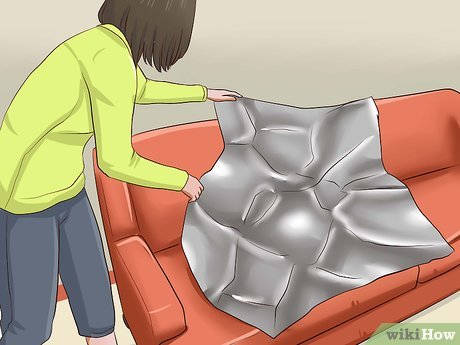
- Some cat owners have reported success in solving similar problems by using strips of duct tape on the armrests of sofas or cushions, in order to create a strange and unpleasant texture for cats. By attaching tape with the sticky side up or down, you can achieve the desired result, as this method works as an effective deterrent.
- Equally effective is the use of scented deterrents on small sheets or pieces of foil, in order to make a particular place in your home less attractive to the cat. You’ll learn more about these scents by watching the next step.

- Lemongrass, lavender, coleus and other natural scents that repel cats. Try placing lavender and citrus zest in small vases on shelves near fragile items or in other places where your cat doesn’t have to walk at all. If there is a need, add essential oils of the same scents to increase the concentration of the scents. By using a lavender or citrus scent spray on your carpets, cats will stay away from certain rooms in your home. You can also use these sprays on other soft surfaces, such as curtains and bedspreads, to deter cats from them.
- Most cat repellents that are commercially available are made from fox urine or waste from other predators. You probably wouldn’t be thrilled about using such products in your own home, but you can read more about that below.
How to protect the couch from the cat: simple and affordable ways
How to protect upholstered furniture from cat claws, why the pet starts scratching the sofa. The use of replacement covers and a scratching post, training the pet. The use of folk remedies to protect upholstered furniture, the use of specialized sprays.
The appearance of a kitten in the house is accompanied not only by joy, but also by some problems. Animals with pleasure sharpen their claws on the upholstery of upholstered furniture. Scolding the pet for this makes no sense, but it is necessary to protect the furniture. Otherwise, the upholstery will very quickly fall into disrepair.
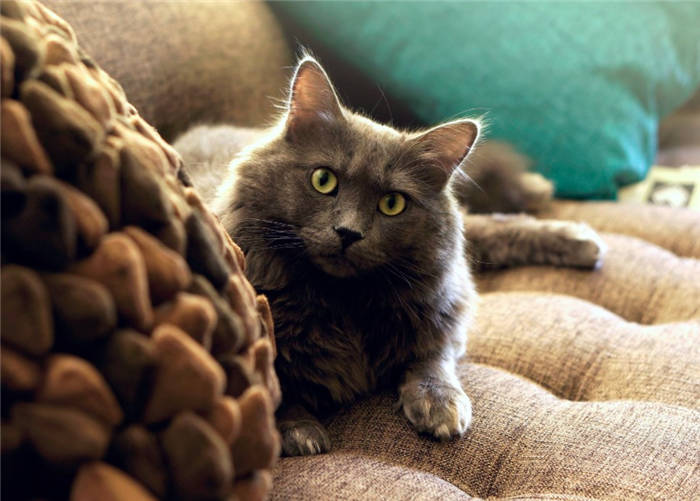
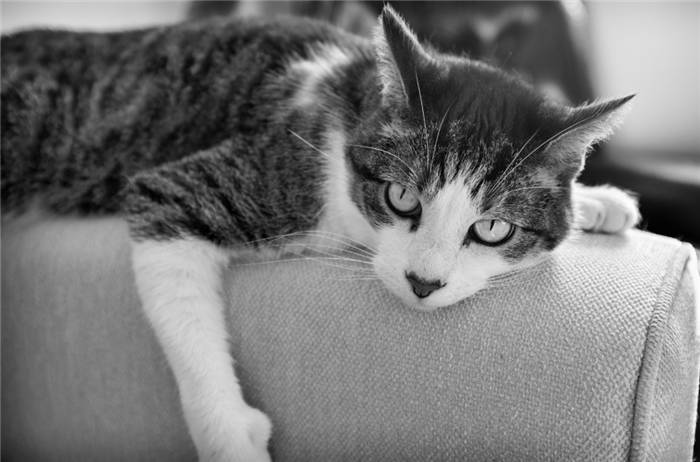 If you do not protect upholstered furniture from the cat, the upholstery will quickly lose its beautiful appearance.
If you do not protect upholstered furniture from the cat, the upholstery will quickly lose its beautiful appearance. 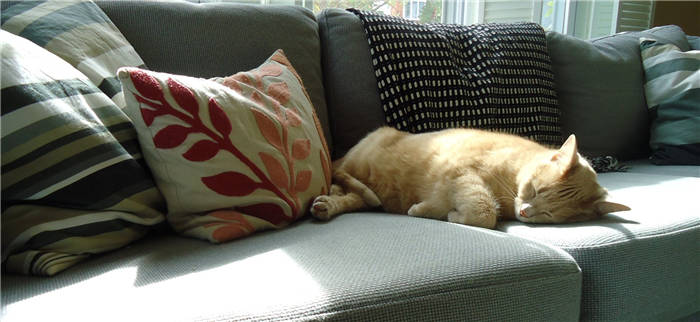 It is important to teach the cat from childhood not to sharpen its claws on upholstered furniture
It is important to teach the cat from childhood not to sharpen its claws on upholstered furniture
These smells discourage cats and can save your wallpaper, flowers and furniture!
Sometimes pets, especially cats, do not want to obey their owners and are very eager to damage upholstered furniture, curtains, wallpaper and flowers. It is very difficult to wean a cat from such behaviors, and it is incredibly difficult to wean an adult cat. To discourage the animal from pesting, owners use a variety of methods. Smells are one popular method. With the help of smells you can accustom the cat to the litter box or, on the contrary, discourage from indoor flowers. Some unpleasant smells will scare the cat away, so that he won’t even look at the curtains or at his favorite sofa again. We’ll tell you what scents can help with cat pest control below!
All of these scents can be used if you need to discourage the cat from the point of pesting. Water-based repellents in spray form are used to spray surfaces. Anti-cat scents can include scents such as:
● Lavender. People are calmed by this smell, but cats are definitely not. They can’t stand it. Therefore, dried lavender and lavender oil will save your things from the little purring prankster.
Coffee and lemon. Cats definitely do not like this scent, so you can use it to scare away pets from the kitchen table. You need to fill a cup with some coffee grounds, add lemon juice or lemon essence and use a jar of the mixture to scare the cat off the windowsill or table.
● Industrial fragrances. Special preparations from the drugstore can help get rid of domestic cat vandalism. You need to buy a spray and spray it in the right place. Often they smell of pine or citrus. This will help to discourage the cat from the pest area.
● Spices. Bright spice scents are also disliked by cats. Pepper, cinnamon and cardamom have a particularly strong effect. They can be placed in the areas where the cat pests the most. Do not apply spices simply in a loose form, as they can harm the mucous membranes of the animal. It is worth packing them in cloth bags or paper bags. This method is not suitable for people with a sensitive sense of smell.
Use the scratching post effectively
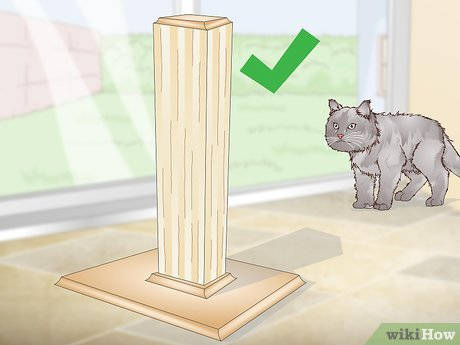
- For example, if the cat likes to scratch the sofa upholstered in a soft cloth, it may be a clue that it prefers a scratching post covered with carpet rather than a hard or prickly material such as sisal.
- Observe the cat’s behavior to see if he likes sharpening his claws on vertical or horizontal surfaces. If the cat prefers to sharpen its nails on the carpet, buy a horizontal scratching post. If the cat prefers to sharpen its nails on door frames and furniture, get a vertical scratching post.
- Also remember that you and your cat may have different ideas about what the perfect scratching post should look like. You might want it to be tidy, not very noticeable and not bother you, whereas the cat might be dissatisfied if it does not get a whole heap of torn cardboard as a result of claw grinding, for example.
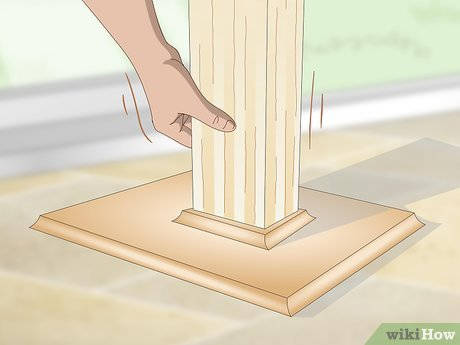
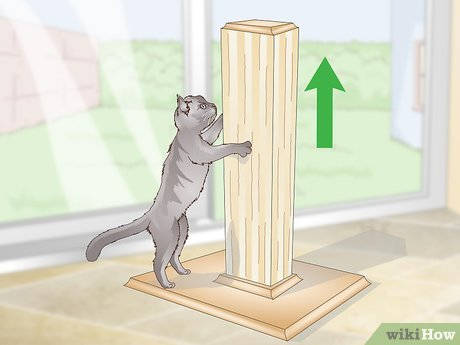
If you have little financial resources, try to make an inexpensive homemade scratching post. You can make a scratching post even from unnecessary leftovers of different materials. For example, you can make a great scratching post out of old wrapping cardboard and scraps of carpeting.
Turn the couch into an unattractive object
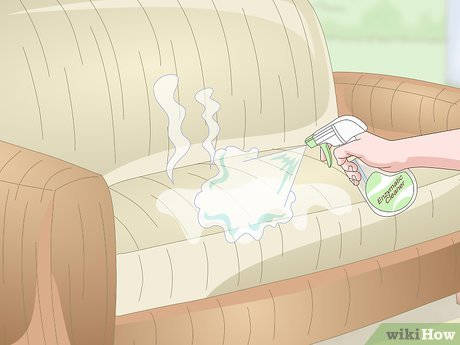
- Special enzyme pet cleaners will allow you to remove cat odor from your couch. You can purchase such a product at your local pet store or online. But don’t waste your money on deodorants that only mask odors without removing the enzymes that are their source.
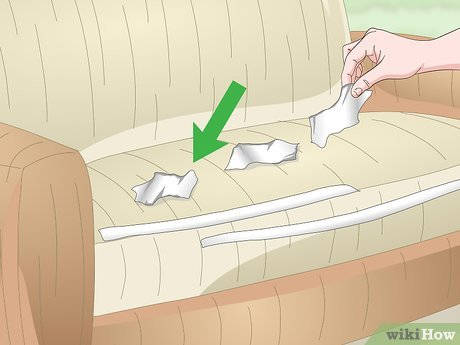
- It can take weeks to months before the cat stops trying to sharpen its claws on the couch. Leave unpleasant objects on the couch for as long as possible and then start to remove them one by one.
- If the sofa, protected in this way, does not look very attractive, it is likely that you will free it in case of guests. Just don’t forget to return the cat repellent as soon as possible, otherwise it is very likely that it will start sharpening its claws on the couch again.
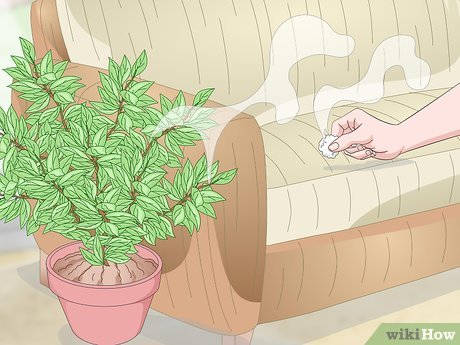
- A cotton ball soaked in perfume or cologne may also help. Keep in mind that a cat’s nose is more sensitive than yours, so there is no need to use too many scents to discourage it from the couch.
- If you choose to deter the cat from the couch with unpleasant smells, don’t place the scratching post too close to the couch. If the scratching post smells unpleasant the cat will not use it either and it will lose its meaning.
Once and for all we will teach our cat to sharpen its claws on the furniture
“More often than not, when people try to protect their furniture from sharp cat claws, they start scolding the cat, driving it away from the scene of the crime, throwing a slipper or “shooting” water at it from a sprayer. Another misguided measure is to grab the animal by the paws when it is sharpening its claws in the wrong place, and carry it to the scratching post. Alas, none of this works. We remember that they have a hard time relating your behavior to what they are doing. From the cat’s side, it looks like its owner has lost his mind and should just be feared for 10 or 15 minutes. Notice that these measures don’t build a bond between pet and human, they just push him away from you. So you should simply allow him to sharpen his claws somewhere else, not on your furniture.
To do this, you must first understand what your pet needs. Look around and try to remember all the places where your cat has been sharpening his claws. Notice which texture was preferable for him and in which direction the “sharpening” itself took place. Most often we can divide cats into those who like to sharpen their claws in a horizontal direction, such as using a rug or the back of a chair, and those who prefer to do it vertically, Here the sides of the sofa are often used.
By the way, there are also those who do not disdain anything and sharpen their claws wherever . After you understand, what is the priority surface for our pet, go to the store and buy such a scratching post. For fans of horizontal sharpening those that are made in the form of sisal mats , Cardboard ones in the form of an infinity symbol, or a figure of eight. If your cat prefers to sharpen his claws on something vertical, the following helps here posts covered with jute or rope, cardboard tables or a column covered with a rug. Our task is to choose a great alternative that is just as good as the furniture itself.
Once we have found the perfect replacement, it is important not just to bring it home and throw it in the farthest corner, but, on the contrary, show it to the cat and let it get acquainted with it and put it close to the place where it is being sharpened.
The material is based on the book by Elena Klusovets “The same language with the cat.
What to do if your furry friend behaves like a little robber? Do not rush to scold him, most likely, he wants to tell you something, but, alas, does not know how. Elena Klusovets has been studying cat psychology for more than 5 years, raising British kittens, runs a popular Instagram blog @vlenika, and helps people to understand those with whom they live side by side. In this book, she gives answers to the most popular questions about cats and felines, talks about their habits, upbringing and training.
Elena and her beautiful British snobs will help you not only solve your immediate problems, but also explain why your pets behave this way:
- Burying their food.
- I’m sure you have a question about claw trimming: will it help. It’s actually going to be ambiguous. When you trim them, the cat will still need to “trim” the tips under himself, and either a scratching post or a couch will help, if there is no other option.
- Chewing on flowers and digging up the ground.
- Do not let her sleep at night and scratch at closed doors.
- Constantly climbing on the table.
- Walking past the tray.
And most importantly, with this book, you’ll learn not only to understand your pets and correct their unwanted behavior, but also to live with them in harmony.
Read an excerpt or buy the book “At One Language With Your Cat” (12+) online store: https://go.ast.ru/a000ktb
Share this article on social media and don’t forget to subscribe To AST nonfiction 






